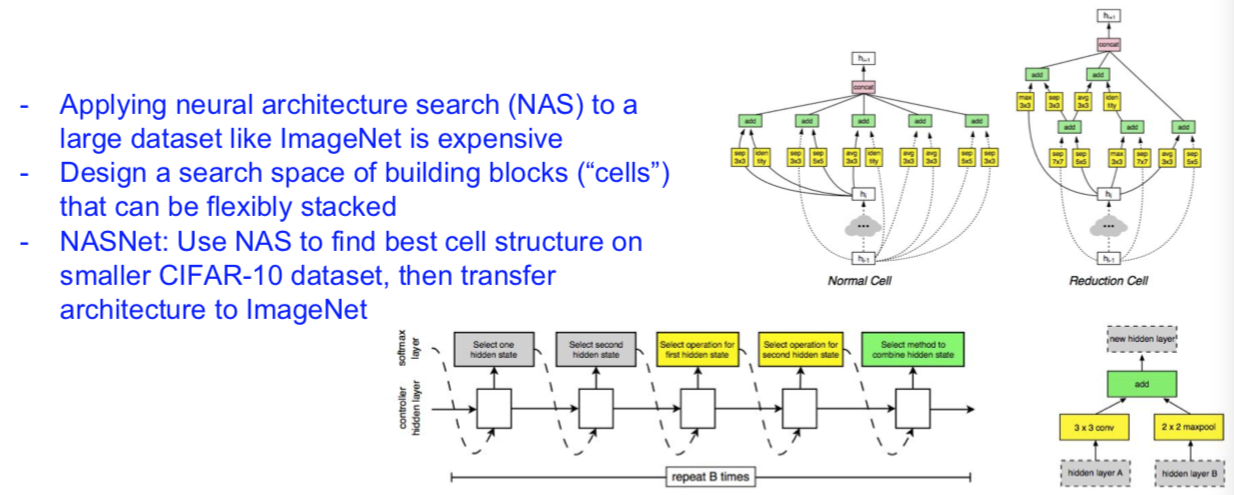Lecture 9. CNN Architectures
Table of Contents
CS231n 课程的官方地址:http://cs231n.stanford.edu/index.html
该笔记根据的视频课程版本是 Spring 2017(BiliBili),PPt 资源版本是 Spring 2018.
另有该 Lecture 9. 扩展讲义资料:
Review: LeNet-5
[LeCun et al., 1998]

Case Studies
AlexNet
[Krizhevsky et al. 2012]
第一个在 ImageNet 的分类比赛中获得成功的大型卷积神经网络。


ZFNet
[Zeiler and Fergus, 2013]
- ImageNet Large Scale Visual Recognition Challenge (ILSVRC) winners
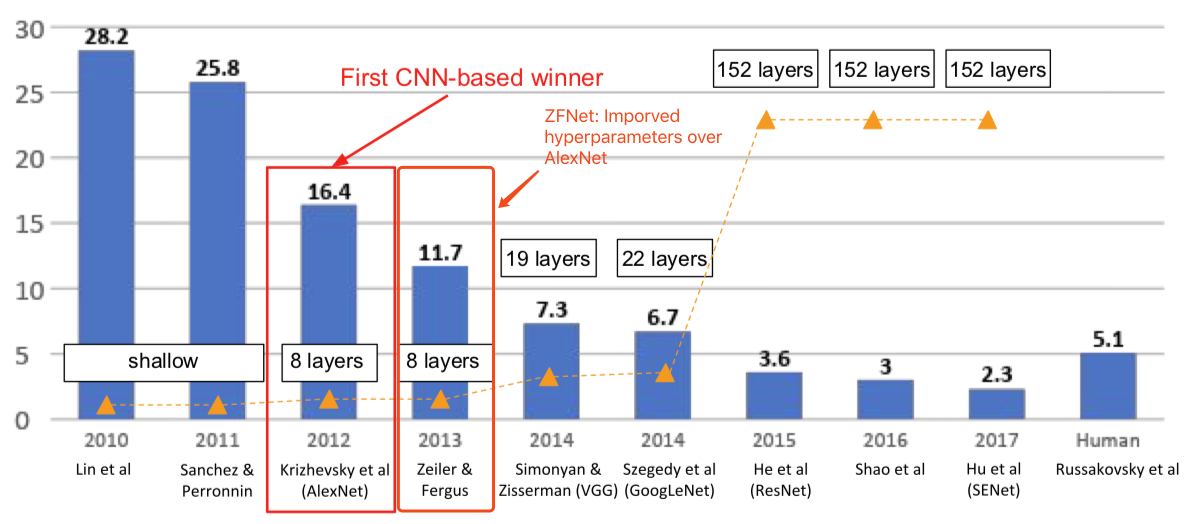


VGG
[Simonyan and Zisserman, 2014]
- ImageNet Large Scale Visual Recognition Challenge (ILSVRC) winners
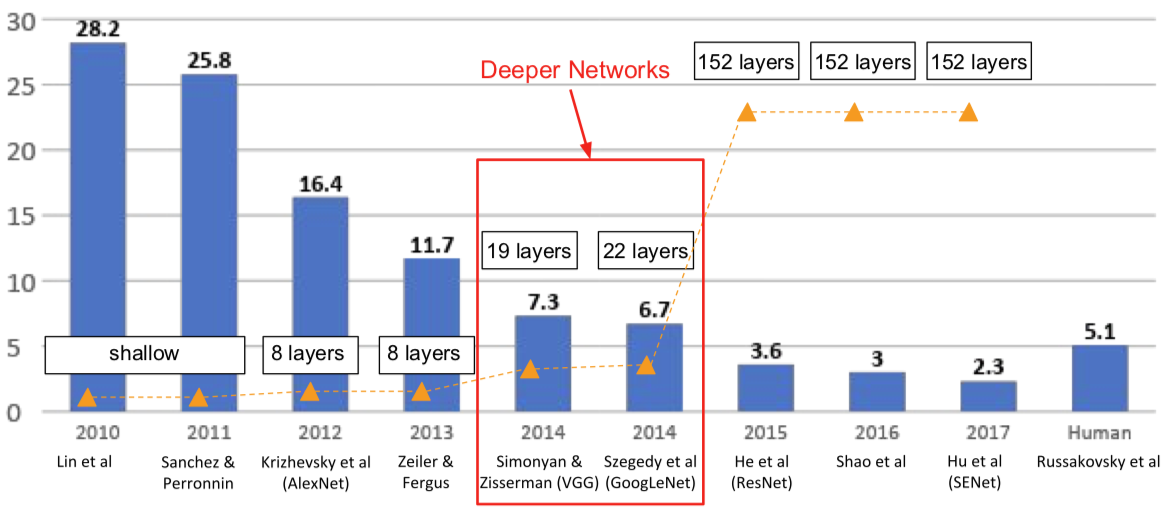
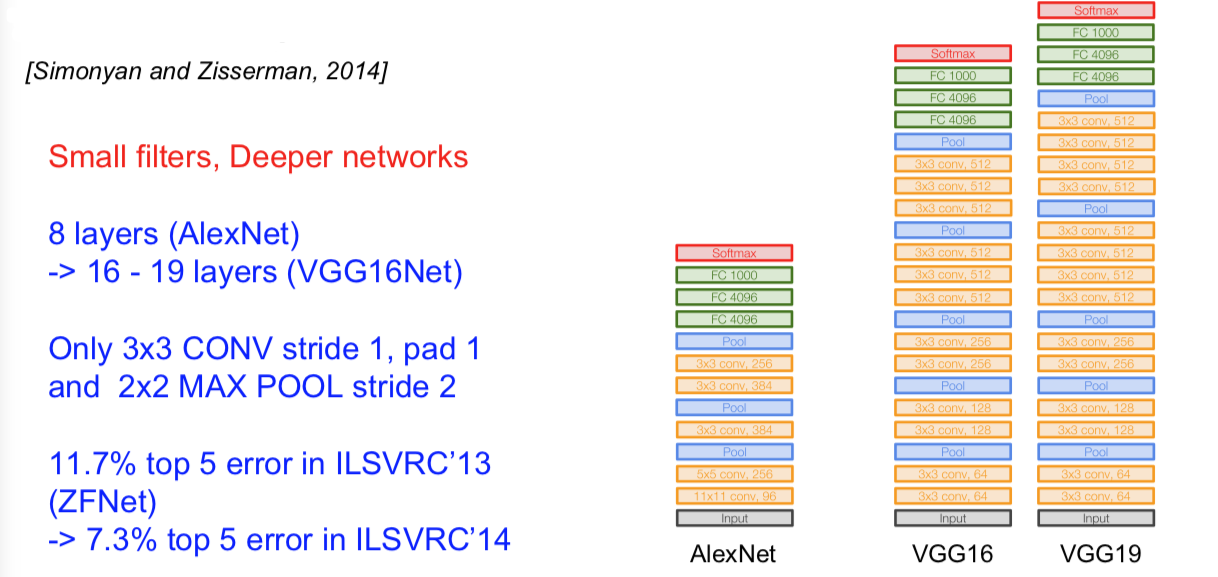
- Q:Why use smaller fileters? (3x3 conv)
- Stack of three 3x3 conv (stride 1) layers has same effective receptive field as one 7x7 conv layer
- But deeper, more non-linearities
- And fewer parameters: $3 * (3^2C^2)$ vs. $7^2C^2$ for C channels per layer
- Q: What is the effective receptive field of three 3x3 conv (stride 1) layers?
- See this post:
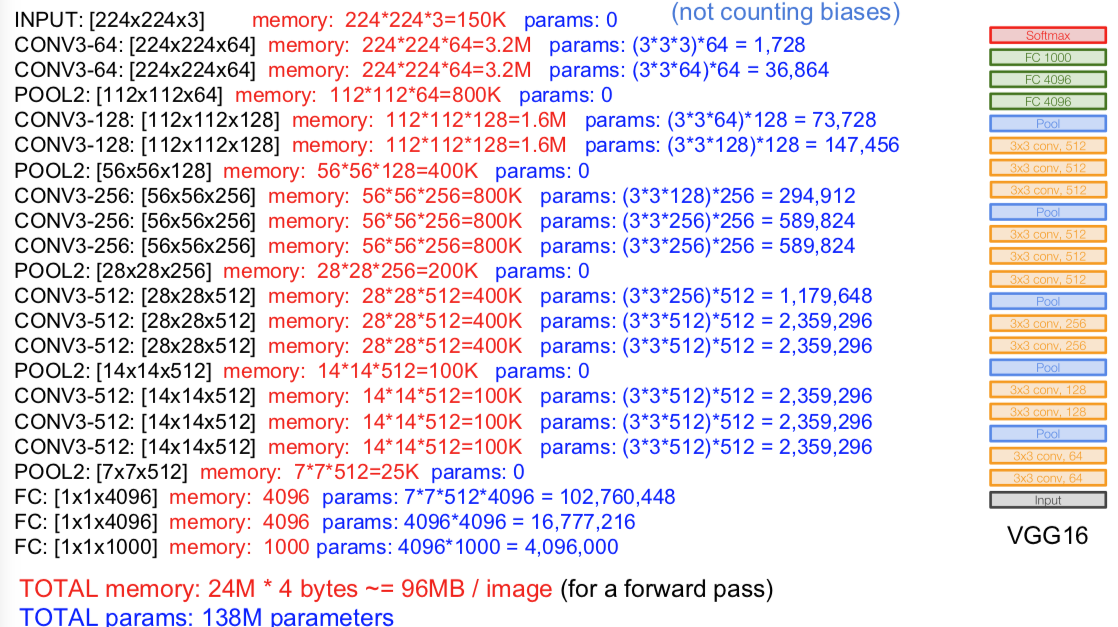
- Details
- ILSVRC'14 2nd in classification, 1st in localization
- Similar training procedure as Krizhevsky 2012
- No Local Response Normalisation (LRN)
- Use VGG16 or VGG19 (VGG19 only slightly better, more memory)
- Use ensembles for best results
- FC7 features generalize well to other tasks
GoogLeNet
[Szegedy et al., 2014]
Deeper networks, computational efficiency
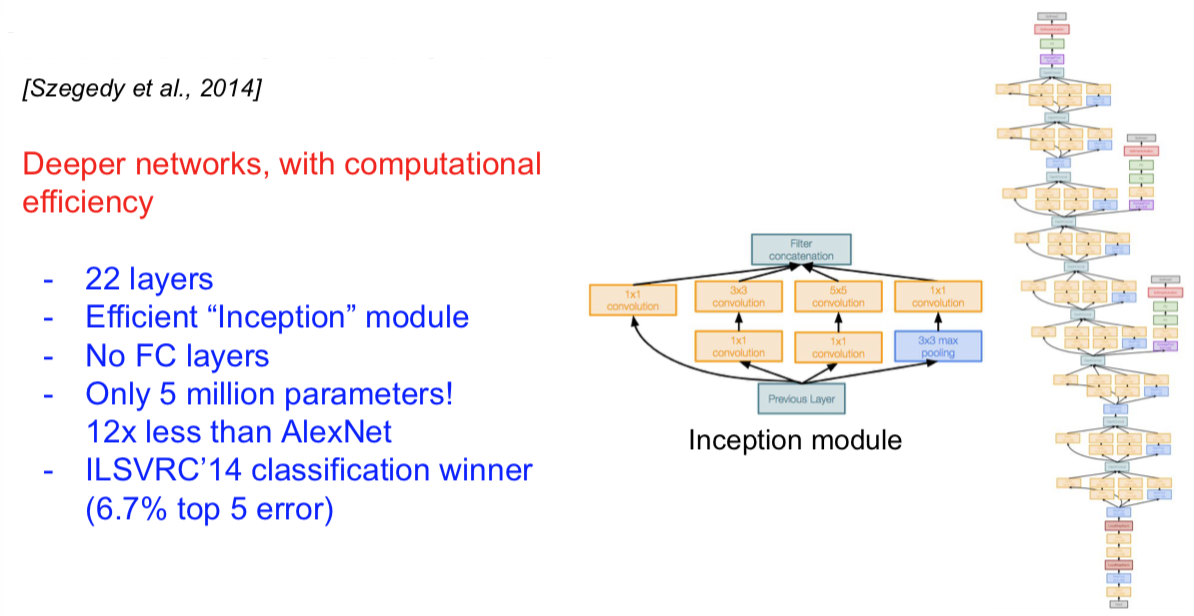
“Inception module”
- design a good local network topology (network within a network) and then stack these modules on top of each other
- Apply parallel filter operations on the input from previous layer:
- Multiple receptive field sizes for convolution (1x1, 3x3, 5x5)
- Pooling operation (3x3)
- Concatenate all filter outputs together depth-wise
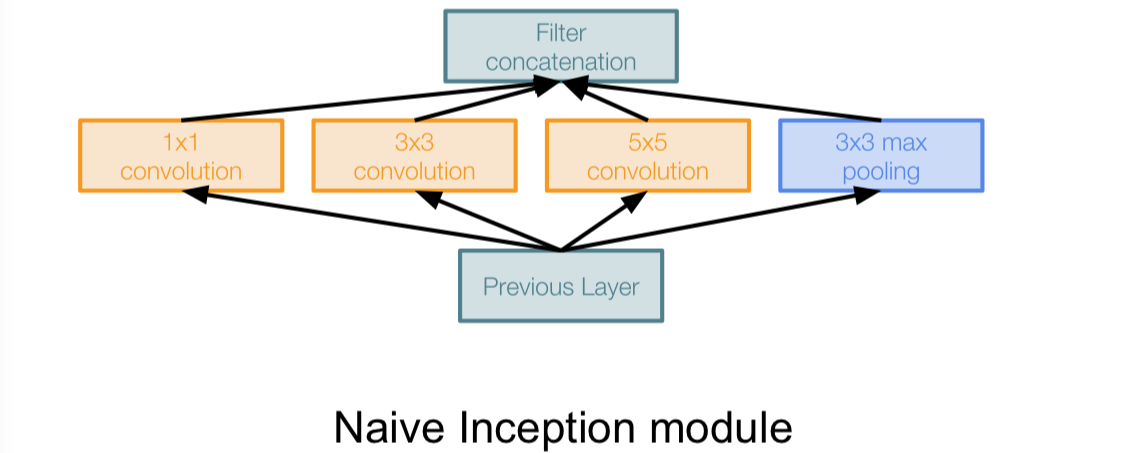
Q:What is the problem with this?
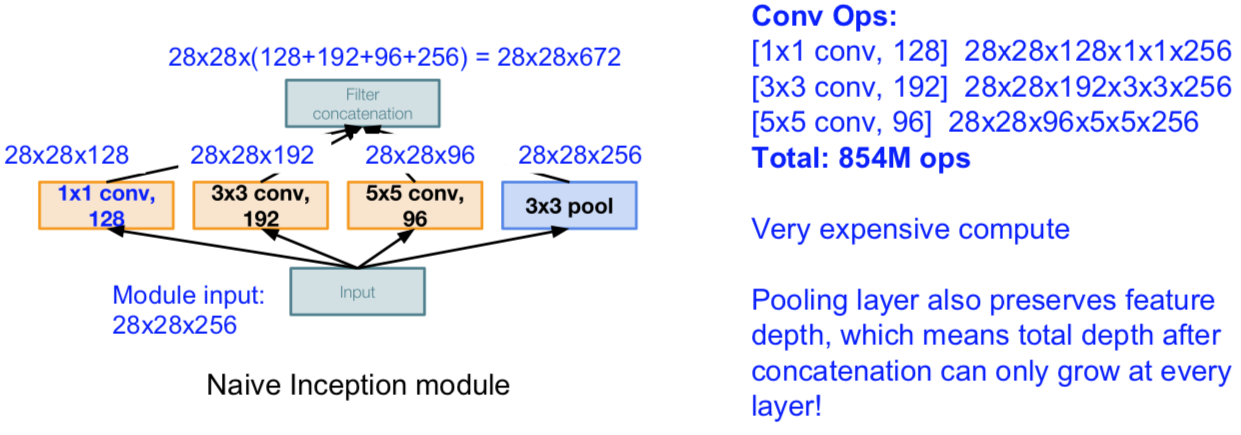
Solutions:“bottlenect” layers that use 1x1 convolutions to reduce feature depth

最后,

ResNet
- ImageNet Large Scale Visual Recognition Challenge (ILSVRC) winners
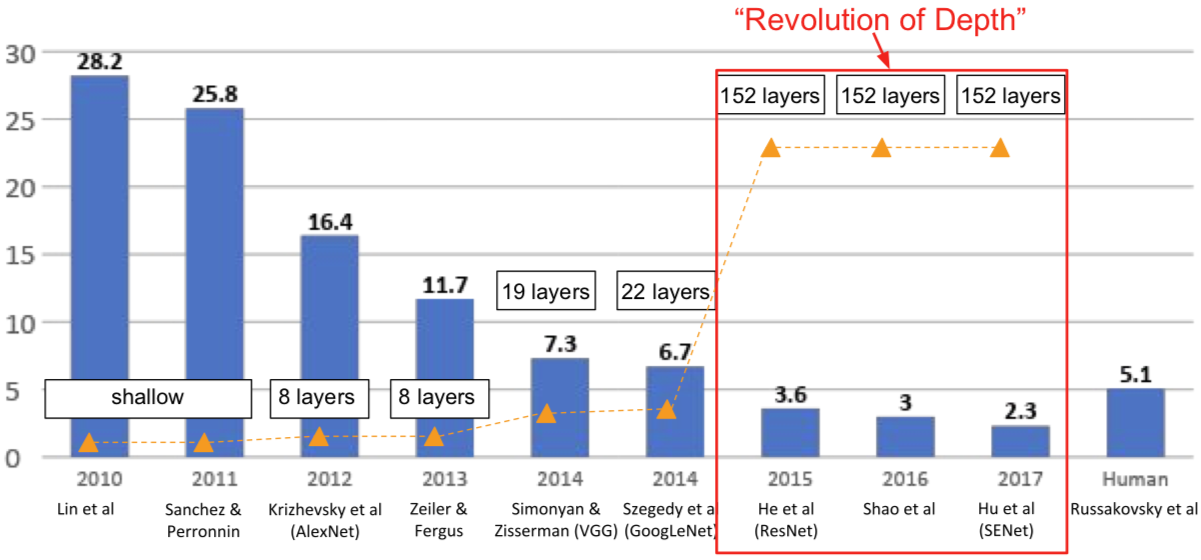
[He et al., 2015]
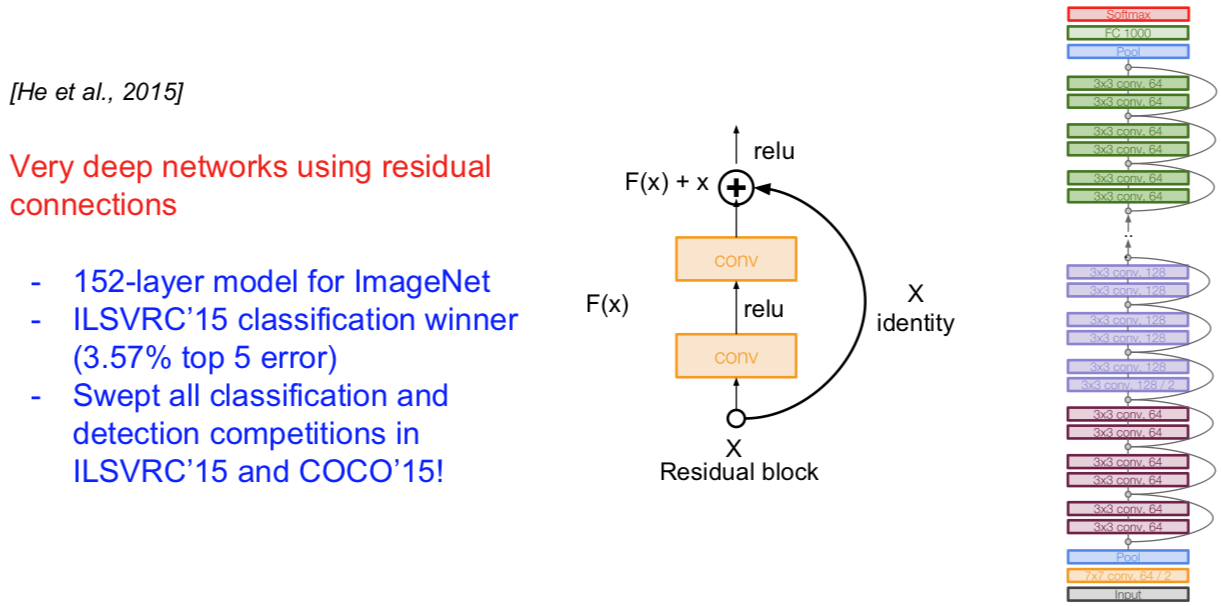
What happens when we continue stacking deeper layers on a “plain” convolutional neural networks?
- The deeper model performs worse, but it’s not caused by overfitting!
Hypothesis: the problem is an optimization problem, deeper models are harder to optimize.
- The deeper model should be able to perform at least as well as the shallower model.
- A solution by construction is copying the learned layers from the shallower model and setting additional layers to identity mapping.
**Solution:**Use network layers to fit a residual mapping instead of directly trying to fit a desired underlying mapping.

最后,
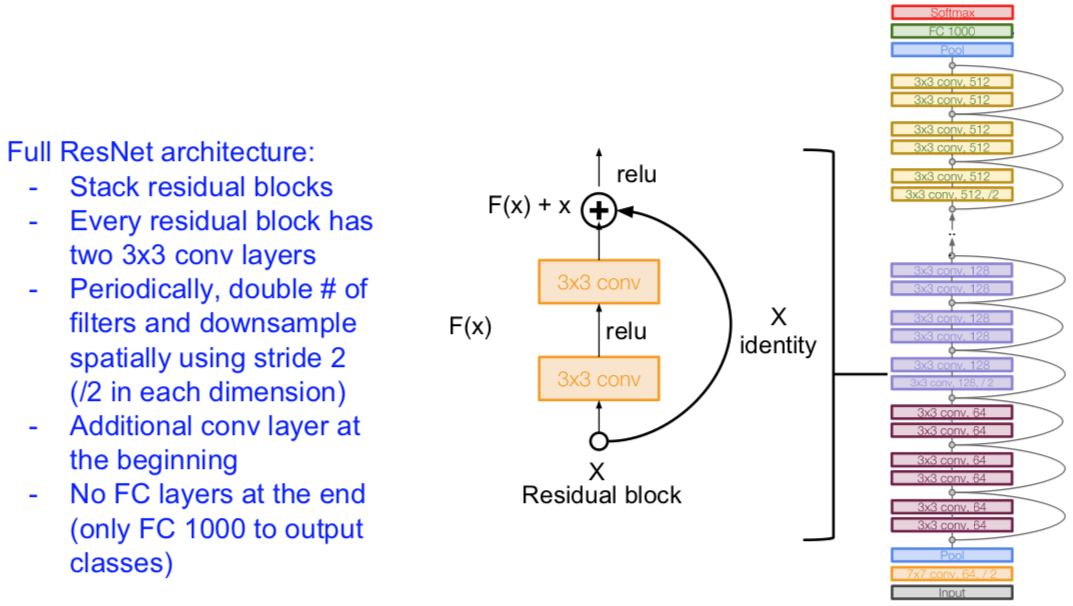
也用瓶颈层:
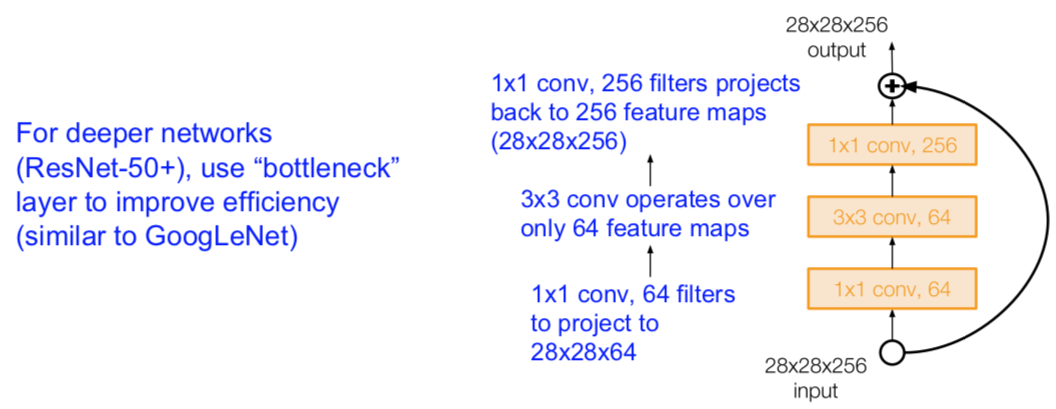
最后给出实践表现:
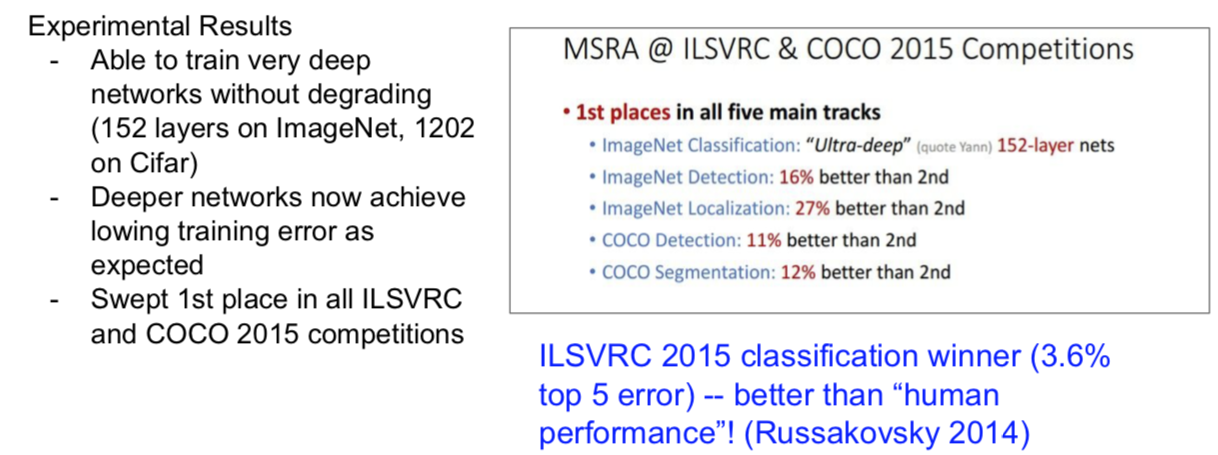
An Analysis of Deep Neural Network Models for Practical Applications, 2017
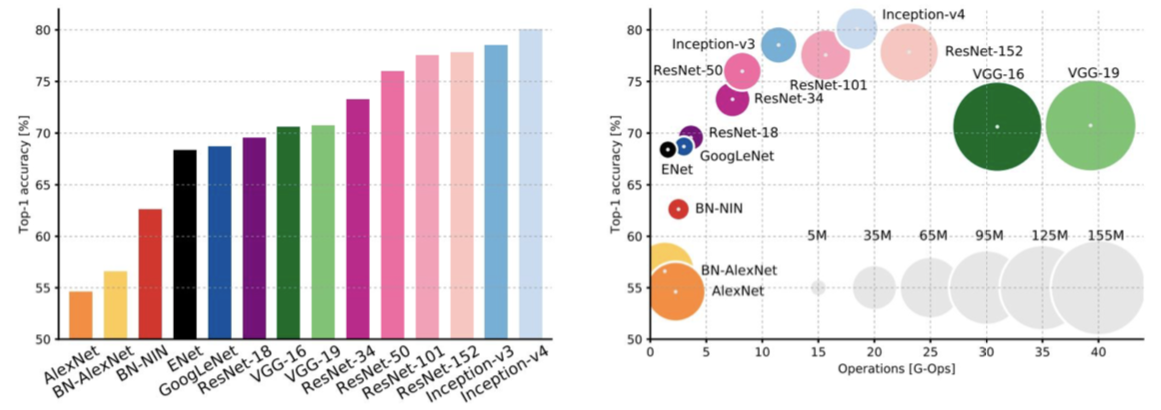
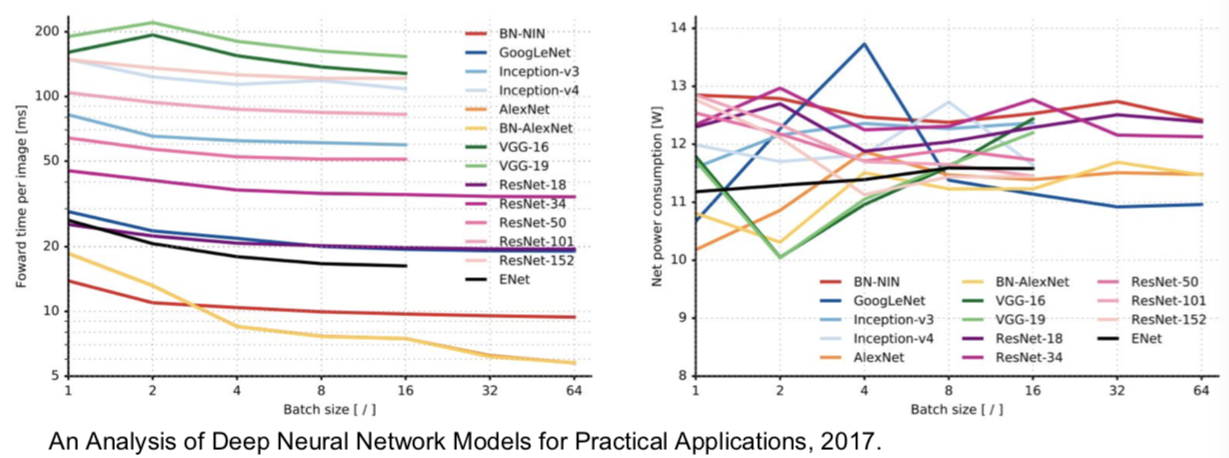
Other architectures to know…
NiN (Network in Network)
[Lin et al. 2014]
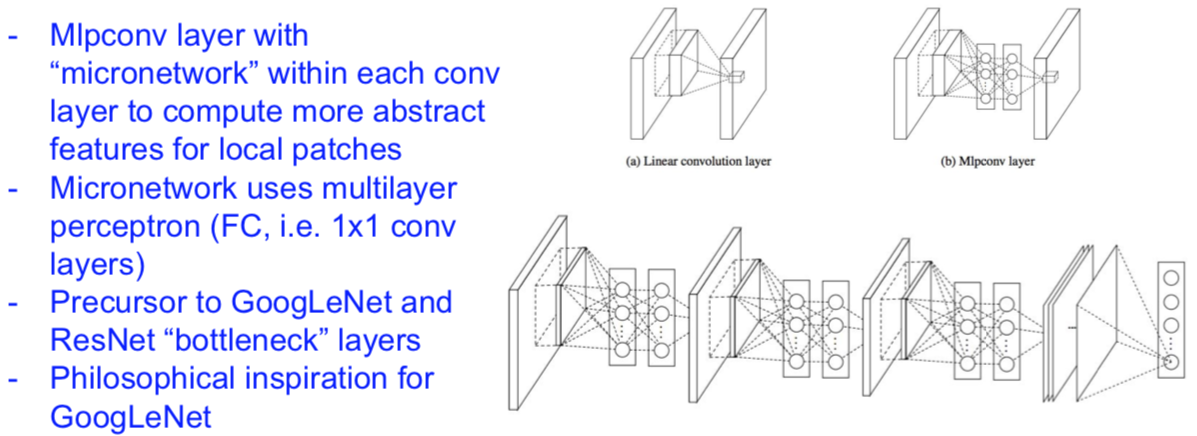
Improving ResNets…
Identity Mappings in Deep Residual Networks
[He et al. 2016]
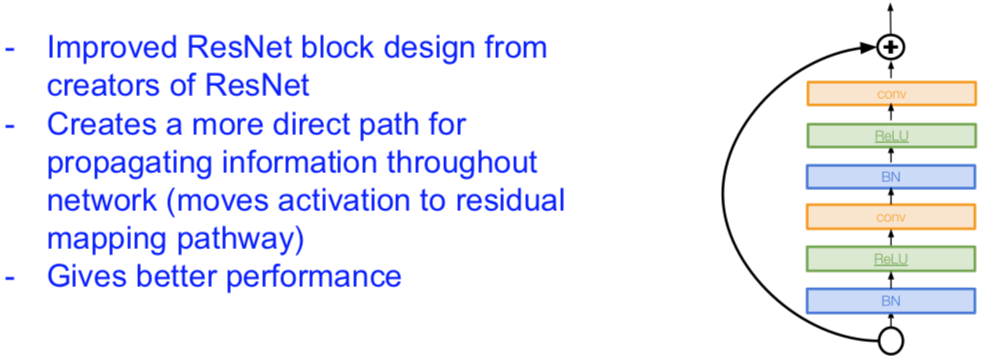
Wide ResNet
[Zagoruyko et al. 2016]

ResNeXT
[Xie et al. 2016]
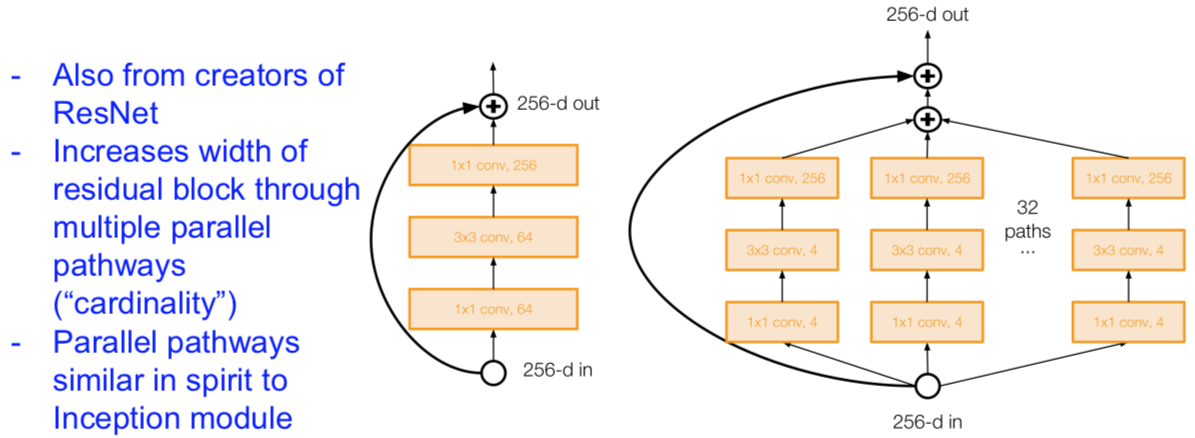
Stochastic Depth
[Huang et al. 2016]

“Good Practices for Deep Feature Fusion”
[Shao et al. 2016]
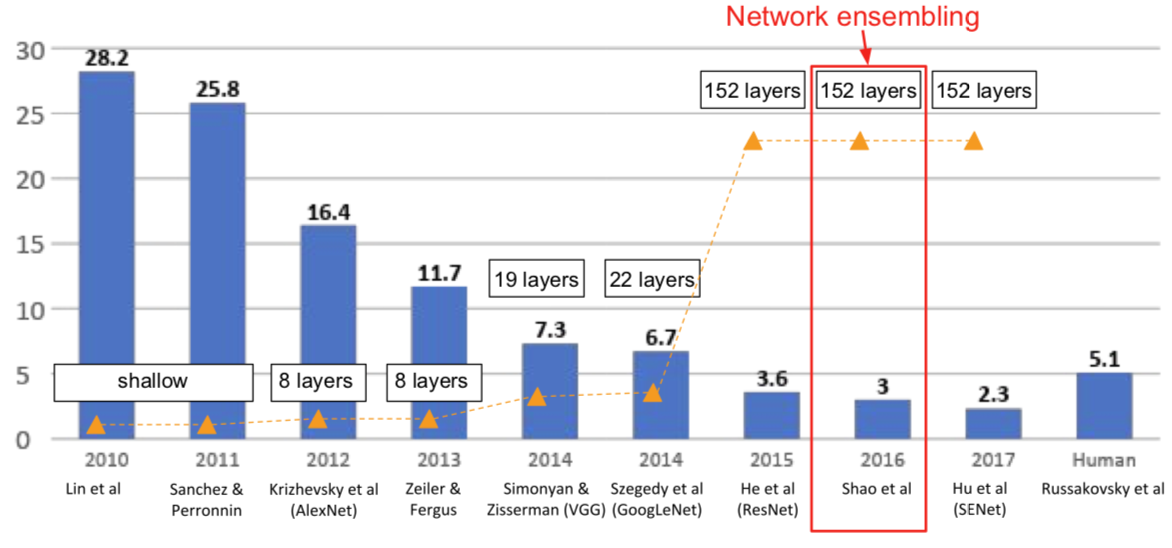

Squeeze-and-Excitation Network (SENet)
[Hu et al. 2017]
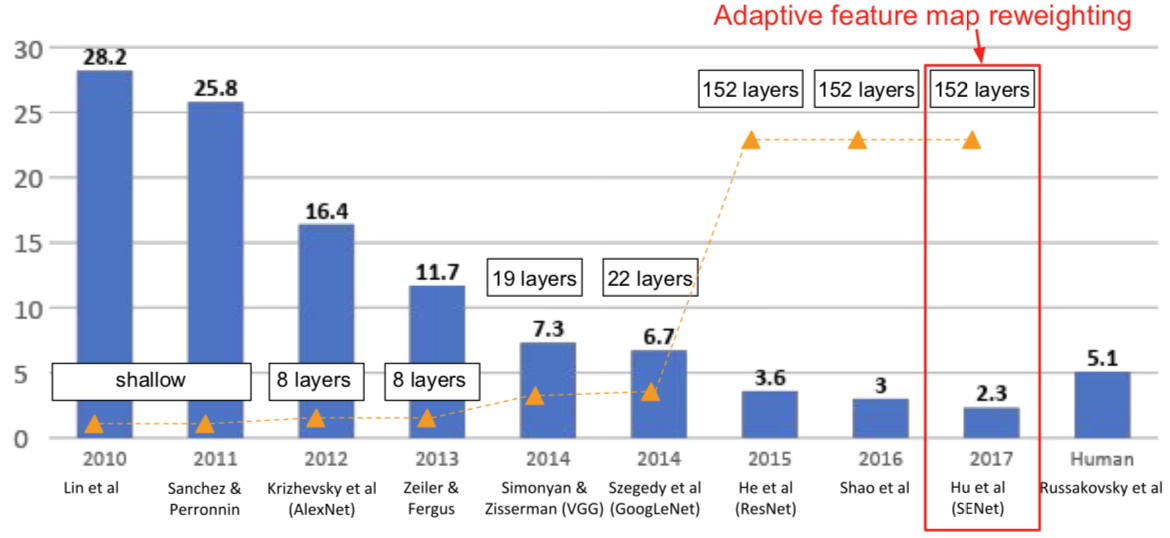
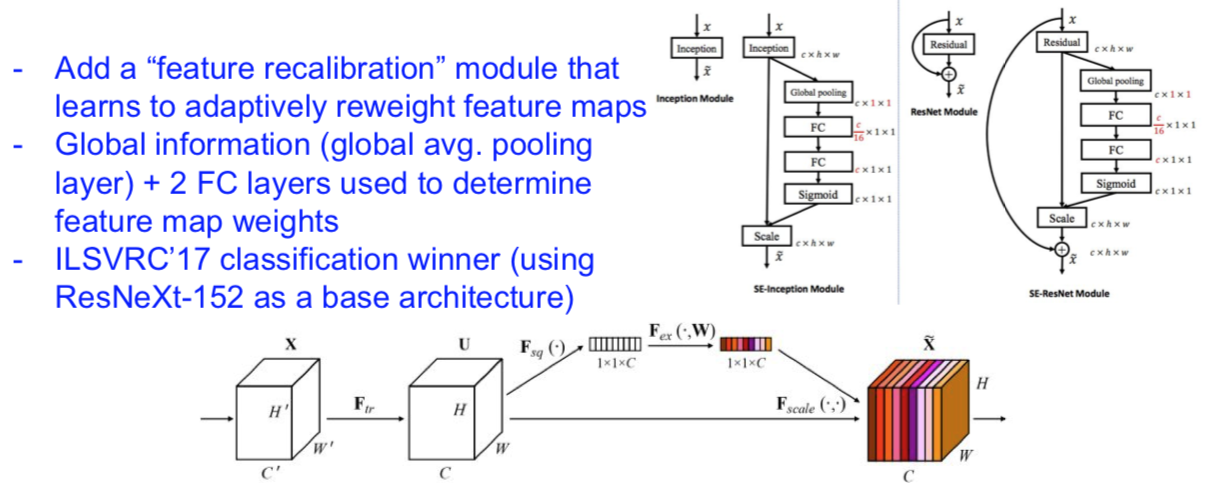
Beyond ResNets…
FractalNet: Ultra-Deep Neural Networks without Residuals
[Larsson et al. 2017]

DenseNet: Densely Connected Convolutional Networks
[Huang et al. 2017]
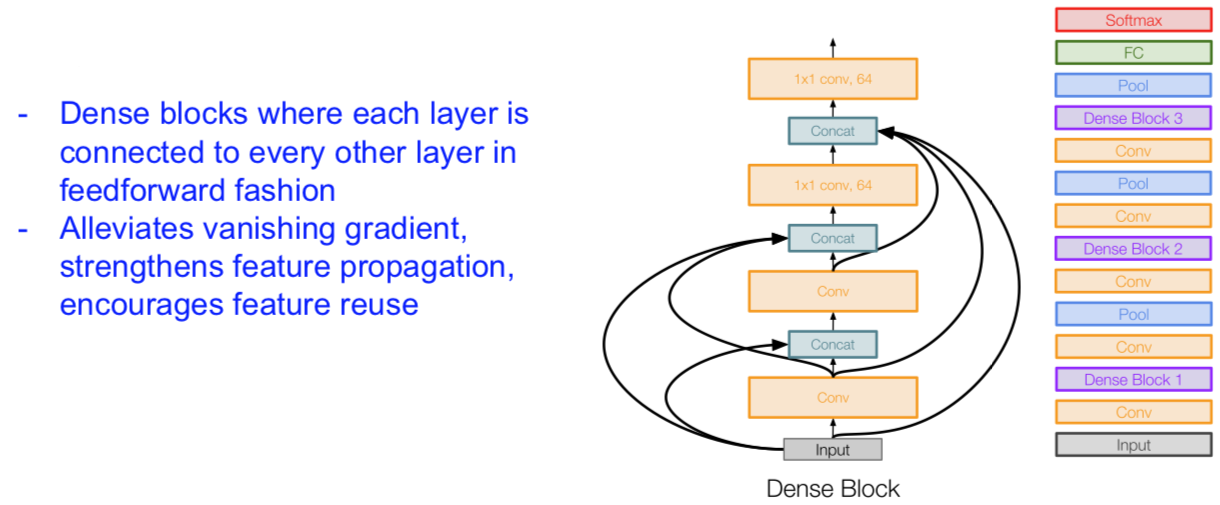
Efficient networks…
SqueezeNet: AlexNet-level Accuracy With 50x Fewer Parameters and <0.5Mb Model Size
[landola et al. 2017]

Meta-learning: Learning to learn network architectures…
NASNet (Neural Architecture Search with Reinforcement Learning)
[Zoph et al. 2016]
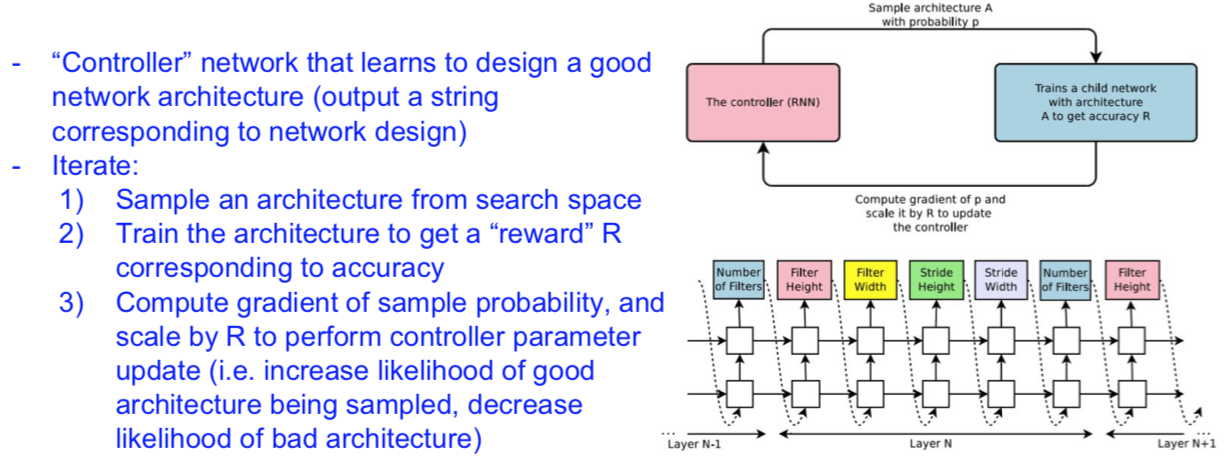
Learning Transferable Architectures for Scalable Image Recognition
[Zoph et al. 2017]
